Standing Figure – Knife Edge
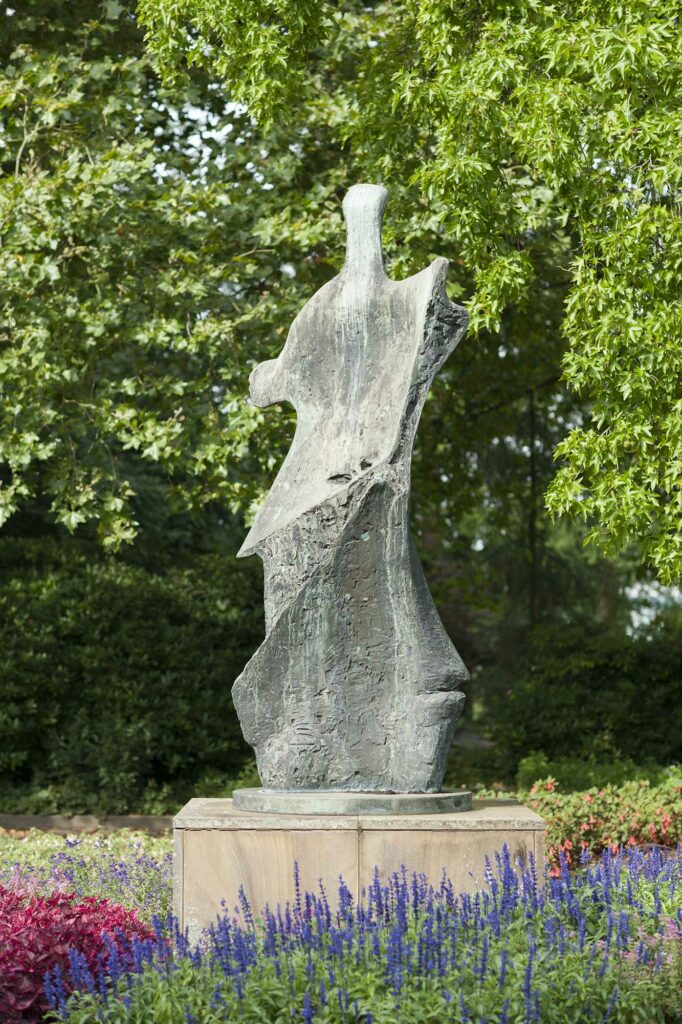
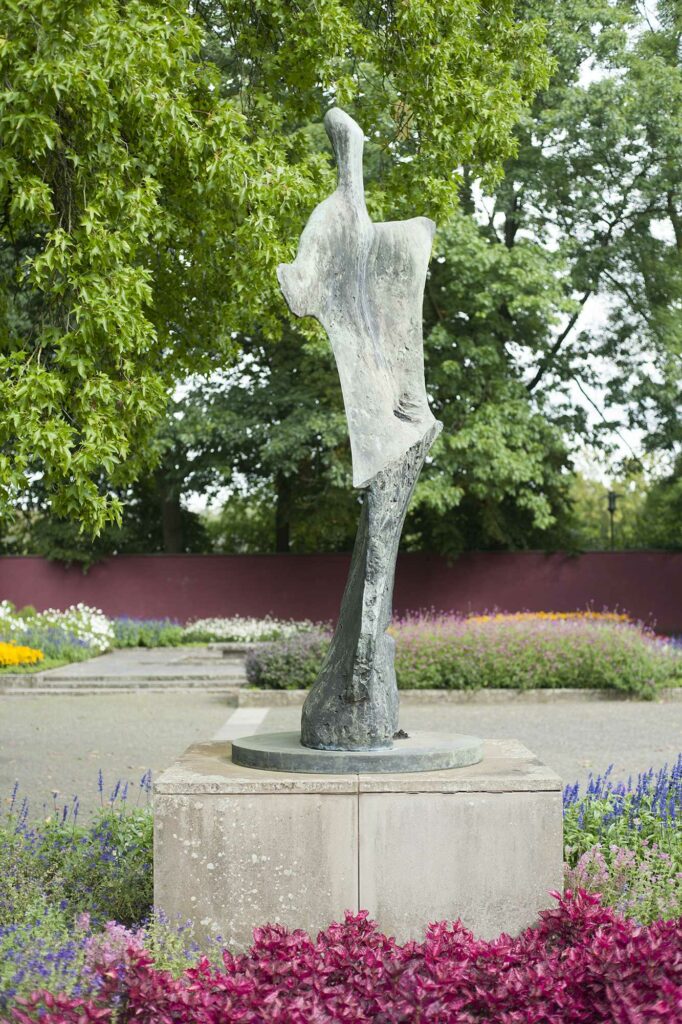
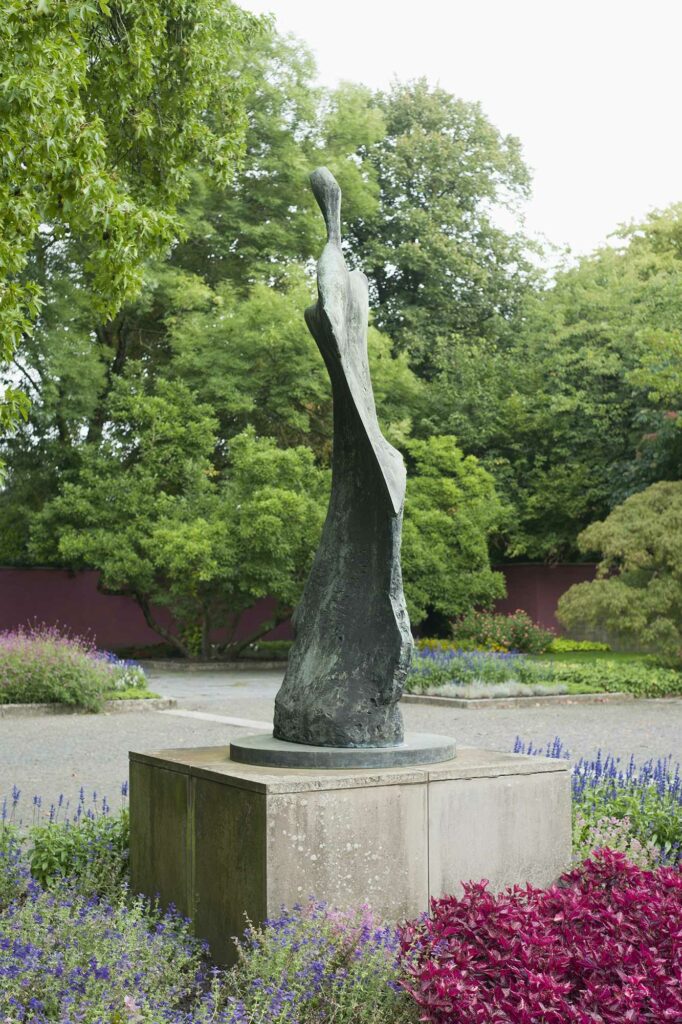
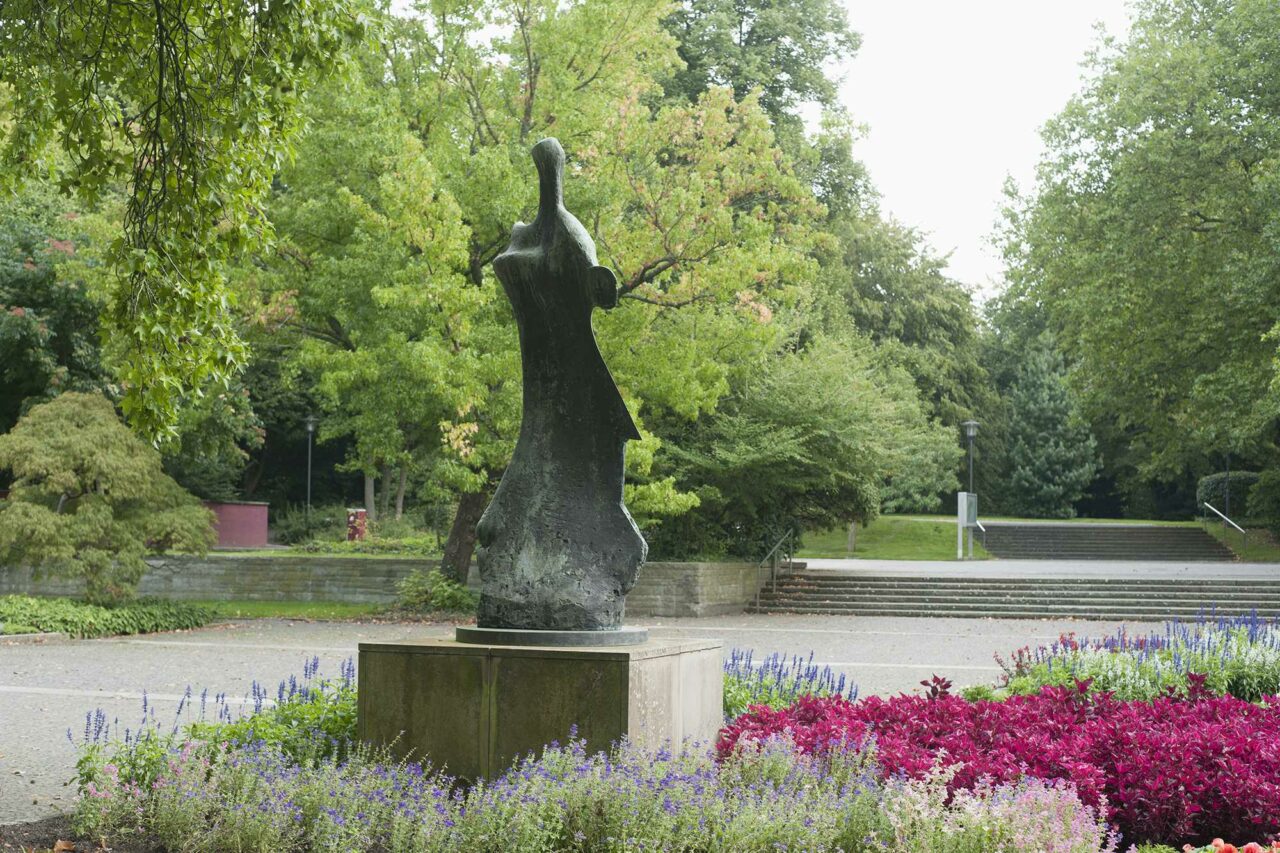
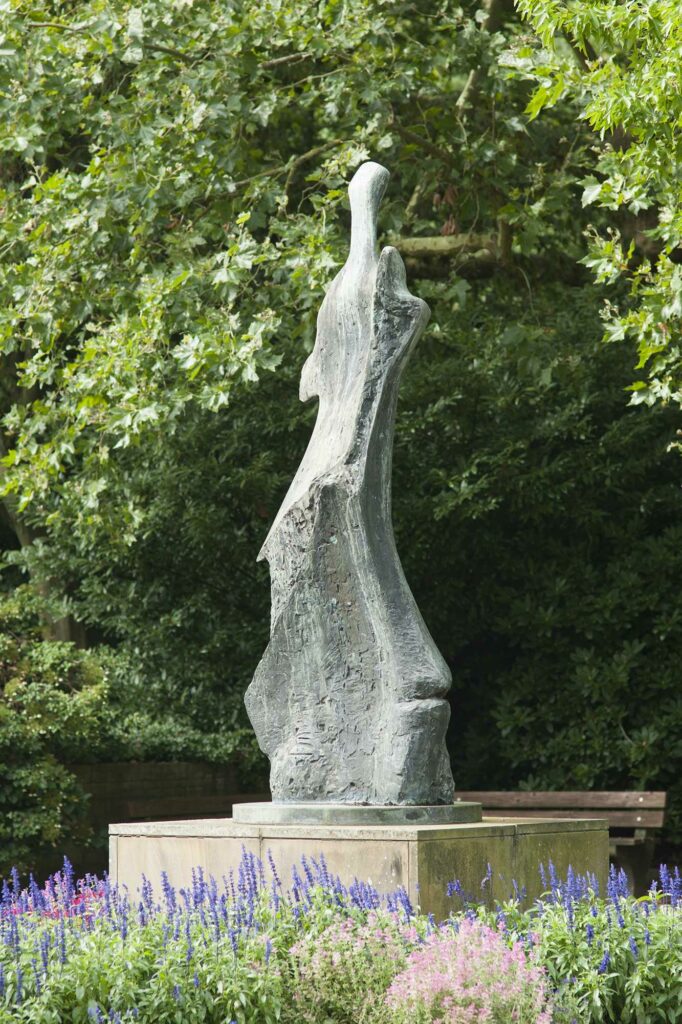
This sculpture is one of Henry Moore’s early works, in which he explored the abstraction of the human figure using organic forms like bones or rocks. Moore first conceived the work in 1961 and based it on the fragment of a bird’s breastbone to which were added a plasticine base and head. A rounded protrusion forms the head, followed by a diagonal sharp edge that runs from the shoulder to the hip. Another edge runs from the hip down the leg so that the figure comes to rest on a round bronze plate. The resulting composition resembles a human torso, reminiscent of the winged Nike of Samothrace, whose body is wrapped in sheets of cloth. The sculpture has been called the final point of Moore’s preoccupation with standing figures, which began with “Standing Figure” (1950). He used a similar approach for his work “Knife Edge Two Piece” from 1962, starting with bone fragments, though the result in that case was a two-part group of sculptures.
The sculpture “Standing Figure – Knife Edge” was cast in two complete versions: In addition to the 1961 version, located in Gruga Park and catalogued under LH 482 by the Moore Foundation, there is a larger version (LH482a) from 1976. The original design was enlarged in three stages. First, Moore produced a 162.5-cm-high working model in 1961 (LH481). The artist then made the 2.8-meter-high “Standing Figure – Knife Edge” (LH482), which was cast in an edition of seven by the Morris Singer Foundry (six plus one artist’s copy). One of these figures now stands in Gruga Park, Essen, other casts are located in the US.
Moore then enlarged the work once more to 3.6 metres to create the “Large Standing Figure – Knife Edge” (LH 482a), which was cast in an edition of eight in 1976.
Henry Moore
← Zur Startseite
Gruga-Park, near Grugahalle, Am Grugapark 10, 45131 Essen